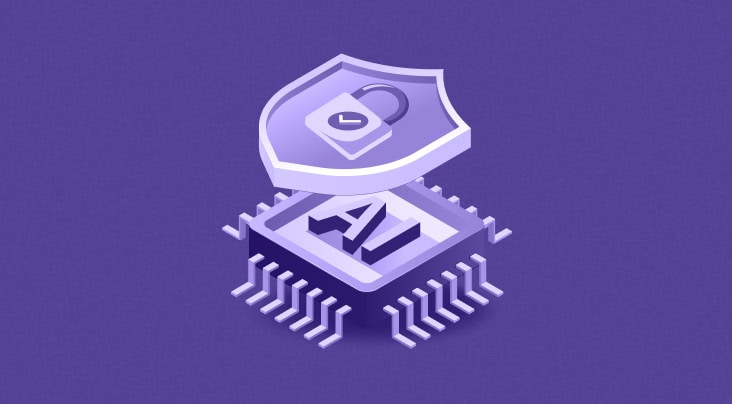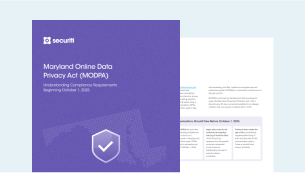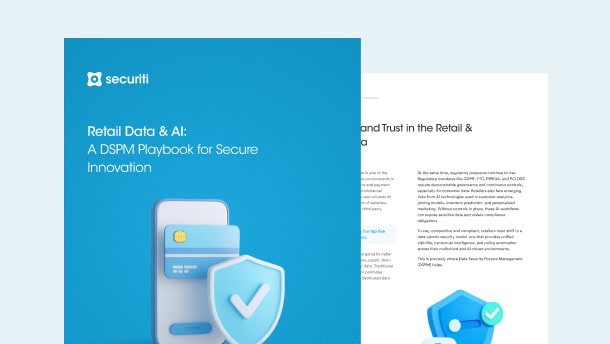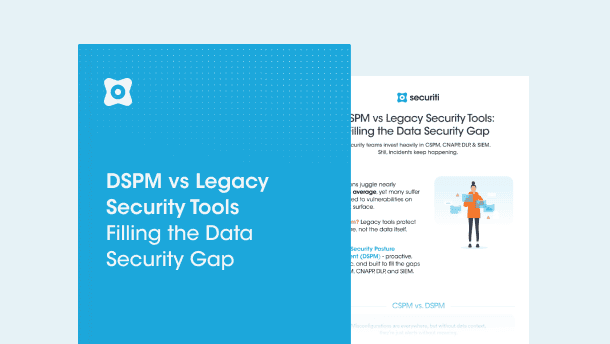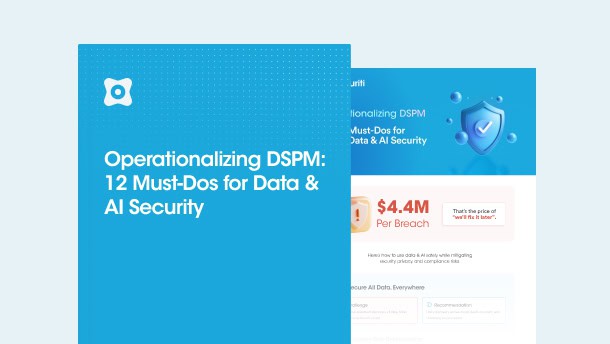Generative Artificial Intelligence (GenAI) has proved to be a transformative force that has made tremendous waves globally. By leveraging deep learning techniques, large language models (LLMs), a subset of GenAI, can analyze massively large volumes of datasets and patterns to produce novel ideas, complex algorithms, creative arts, and innovative solutions. However, this disruptive technology has caused 93% of Chief Information Security Officers (CISOs) to scrutinize their “future as a CISO,” as revealed in the latest survey.
GenAI is a groundbreaking technology, and thus, the risks associated with it are unprecedented. Traditional cyber security strategies aren’t exactly built to tackle this latest category of risks, such as prompt injection, toxicity, hallucination, data poisoning, and model theft. Therefore, CISOs must rethink their approach to securing their AI real estate for safer and more responsible use of the technology.
AI: A Double-Edged Sword With Real Potential for Risks & Abuse
Globally, enterprises are adopting LLMs at an accelerated pace to power their GenAI applications, such as AI copilots, insights and analytics, and business automation tools. However, as appealing as LLMs may be, they introduce a new set of critical security, privacy, ethical, governance, and compliance risks. For example, an AI technology developed and used for hiring purposes might unintentionally favor one demographic over the other, resulting in a serious clash of ethics while exuding a negative perspective to the world.
LLMs developed, deployed, and used without proper policies and controls could potentially be used for unlawful and unethical purposes, such as:
- Unauthorized access to individuals’ sensitive personal information without consent.
- Unauthorized mass surveillance.
- Deep fakes of popular personalities, such as politicians, philanthropists, or celebrities.
- Inadvertent breach of individuals’ personal or sensitive personal data.
- Promotion of biases, prejudices, or racism on a massive scale.
Here, AI risk management frameworks play an important role in managing and mitigating unwanted outcomes resulting from GenAI applications.
Implement AI Risk Management Framework to Manage Complexities
AI risk management frameworks, such as the National Institute of Standards and Technology (NIST) AI Risk Management Framework (AI RMF), enable enterprises to identify, assess, and mitigate security, privacy, ethical, and compliance risks found in AI systems across its lifecycle to ensure its safe development, deployment, and use.
A typical framework involves the following critical steps that businesses must consider to mitigate the threats posed by AI systems effectively.
Identification
It is crucial to find out the purpose of the AI system and how the data moves across the systems and is processed. Similarly, in this stage, the enterprise must further identify relevant stakeholders, AI actors, and the various applicable data and AI laws or standards. Depending on the outcome of the analysis, businesses can determine the risks associated with the data and AI systems, such as the compliance risks that are based on the jurisdiction.
Risk Assessment or Analysis
In the second stage, businesses must assign a risk score or category to the risks that can cause or are likely to cause some harm to an individual. For instance, the European Union Artificial Intelligence Act (EU AI Act) has adopted the following categories for AI-associated risks: Unacceptable, high, medium, and low risks. To further elaborate, any AI systems that can cause or are likely to cause a clear threat to the health and safety or fundamental rights of a natural person can be rated as a high-risk system.
Risk Response Determination
As the name implies, this step involves determining the mitigation measures to respond to the identified risks. These measures may vary depending on the score or level of risk. Certain risks can be mitigated by implementing relevant controls, such as applying dynamic masking policies for data sharing. However, some risks may involve more sophisticated measures, where assistance from a more capable third-party service or solution might be required.
Risk Control Implementation:
In this step, teams adopt and implement the measures, such as policies and controls, determined in the previous step. These controls can be technical or administrative, based on the level of risks involved. For example, data sensitization protocols can be an effective measure to respond to risks associated with biases.
Monitoring and Overviewing
AI risk assessment isn’t a one-off job. In fact, it requires continuous monitoring of the AI landscape as more systems and applications are added to the environment sporadically, bringing in many more risks.
Consider a 5-Step Approach to Reduce Risk through AI Governance
CISOs may consider the following five essential steps to mitigate risks and ensure the ethical and safe use of AI.
Discover And Catalog AI Models
To protect their LLMs, AI applications, and data, businesses must have a comprehensive overview of their AI landscape, including what AI models (sanctioned or unsanctioned) exist in the environment, their purpose, properties, training datasets, and their interactions with other models or the data itself. With a comprehensive catalog of all the rich metadata around their data and AI, businesses can efficiently improve transparency and governance.
Assess Risks And Classify AI Models
In this step, businesses must evaluate the risks associated with their AI models across their lifecycle, such as during development and post-development. Depending on the criticality of the risks and global regulations, businesses may classify their models and data accordingly. Businesses may further leverage out-of-the-box templates for popular AI models to identify common risks, such as AI prompt injection, toxicity, hallucination, sensitive information exposure, and other threats as covered under the Open Worldwide Application Security Project (OWASP) Top 10 List for LLM applications.
Map And Monitor Data + AI Flows
It is crucial to understand the flow of data and AI as there are various instances where data flows in and out of AI systems, such as for training and tuning or for output in response to a prompt. By mapping LLMs or AI systems with data processing activities, relevant data sources, regulatory obligations, and vendors, businesses can efficiently gain a full understanding of their AI models and systems.
Implement Data + AI Controls for Privacy, Security, and Compliance
In this step, businesses should implement appropriate security, privacy, and compliance controls to ensure data protection and confidentiality. Controls like data anonymization, sensitive data redaction, and LLM firewalls must be placed to protect LLM interactions and prevent sensitive data exposure or malicious internal use.
Comply with Regulations
AI systems that use personal or sensitive data are subject to regional and global data and AI laws and standards. Compliance with these laws demonstrates an organization’s ethical and safe development and use of LLM technologies. Therefore, businesses must begin by identifying applicable data and AI laws and performing readiness assessments to evaluate their current compliance posture and mitigate compliance risks.
Enterprises that successfully carry out these five steps -
- Will gain full transparency into their AI systems, giving them a deeper understanding of and control over how they operate
- Will unlock clear visibility into their AI risk awareness, enabling them to identify and mitigate potential risks effectively
- Will achieve clarity over AI data processing, ensuring that data handling is efficient, ethical, and compliant with regulations
- Will safeguard their technology against misuse and vulnerabilities by constructing adequate protection around AI models and interaction systems
- Will benefit from ease in navigating the constantly evolving landscape of AI regulatory compliance, staying ahead of legal and ethical requirements.
Maximize Security with Advanced Controls & LLM Firewalls
Businesses are adopting GenAI to power their modern conversational applications. However, these multilingual conversations must be assessed inline to detect malicious use, toxic prompts, and biased responses. Here, LLM firewalls provide an added layer of security, ensuring that the data’s interaction with internal, public, or commercial AI systems remains secure and compliant. CISOs may use the LLM firewalls to protect their AI interactions in prompt and response instances while also protecting their retrieval data. For instance:
Prompt Firewall
In this instance, the firewall inspects the user prompts to identify anomalous behavior and toxic prompts. It further helps identify and redact sensitive information and prevents any jailbreak attempts.
Retrieval Firewall
In this interaction, the firewall monitors and controls the data that is retrieved during the retrieval augmented generation (RAG) process. It ensures topic and guidelines compliance, sensitive data redaction, and prompt injection prevention.
Response Firewall
In this instance, the firewall examines the responses generated by the LLM, ensuring that any sensitive information is redacted and toxic content or prohibited topics are avoided.
Secure Your Data Anywhere with GenAI Anywhere
Operationalizing AI security and governance is not just a regulatory necessity but a strategic advantage. By adopting the outlined steps, organizations can ensure full transparency, heightened risk awareness, and clarity in AI data processing, alongside robust protection for AI models and interactions.
By 2026, organizations that operationalize artificial intelligence (AI) transparency, trust and security will see their AI models achieve a 50% improvement in terms of adoption, business goals and user acceptance. - Gartner
Embracing AI governance transforms regulatory obligations into growth opportunities, fostering financial gain, enhancing reputation, and facilitating informed decision-making. This pivot from compliance to strategic advantage underpins the significance of integrating AI security and governance into the core of your business operations.
Safeguard your AI and unlock its potential with Securiti’s AI Security & Governance. Request a demo to see how our solution may help you in your journey towards AI governance.






































